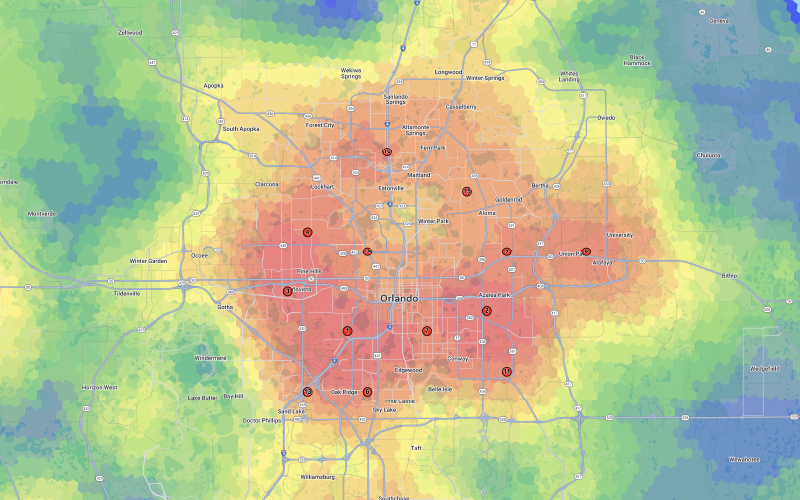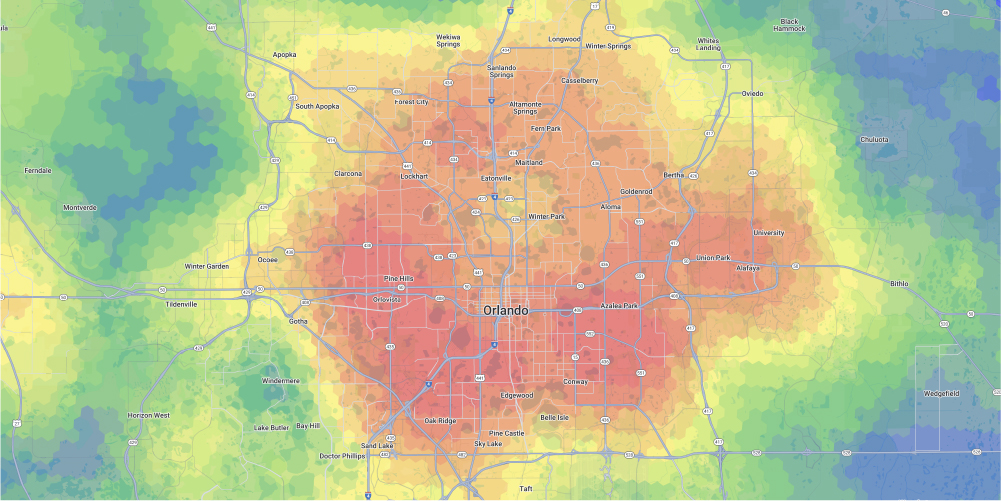Understanding The Scenario
Let's say you're working with a car wash brand like ModWash, expanding across Florida. Their ideal sites have these attributes,
- 1 acre of land (ideally for sale)
- 35,000 people within the trade area
- $51,000 median household income
- 20,000 average daily traffic (ADT)
Rather than sifting through endless spreadsheets, we used Market Optimization to show how site selection could look for their concept. This same process works for any retail, service, or restaurant brand expanding into new markets.
Build The Market Optimization Study
To start, we plugged ModWash's target demographics into Market Optimization, with a 3 mile radius.
Both factors were given equal weight, balancing population density (to capture strong customer bases) and median household income (to gauge spending potential).
- For population, we set a minimum threshold of 35,000 people.
- For income, we told the model to prioritize areas closest to the $51,000 median, scoring locations higher the closer they matched.
We also added a filter to only consider locations that had a minimum of 20,000 average daily traffic (ADT) to ensure strong visibility.
From there, we asked Market Optimization to find the top 30 trade areas meeting these conditions, while applying a 3 mile exclusion zone to prevent overlapping results. All this helps us create a clear picture of where opportunity and demand overlap, without getting bogged down in tables of data.
The Results
In just a few seconds, the Orlando map filled in with potential high performing locations.
These weren't random dots. Each location represented a data backed trade area where the right population, income, and traffic converge. helping you see opportunity at a glance rather than row by row.

Connecting The Results
The locations shown in the final map aren't just theoretical — they represent real properties available for sale that match ModWash's buying criteria. These listings come directly from the Active Listings dataset (link to page), a constantly updated collection of commercial sites sourced from verified brokers and listing services.
By layering this dataset over the Market Optimization results, we were able to pinpoint specific parcels of land in the highest performing trade areas identified by the tool. In other words, we didn't just find where ModWash should look - we found what's actually available in those ideal zones right now.

This is where Market Optimization shines: it bridges market potential and real opportunity. Instead of toggling between multiple platforms, you can see everything; demographics, traffic, income, and live listings, all in one place. That means faster decisions, smarter targeting, and fewer missed opportunities when inventory moves fast.
Takeaways
Market Optimization helps turn massive datasets into clear, visual stories about where opportunity exists, without the complexity of building queries or reports from scratch. Whether you're testing one market or one hundred, Market Optimization gives you a head start, before your competition ever starts driving the market.
It's the fastest way to test expansion scenarios, compare markets, and narrow your focus to the trade areas that actually perform on paper before you ever drive the market.
And here's the fun part - we're not CRE brokers. So if we can uncover ideal sites this quickly, imagine what a skilled broker could do with the same data in half the time.
